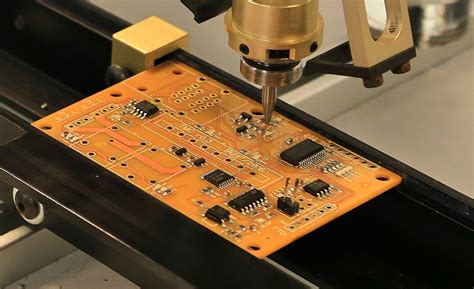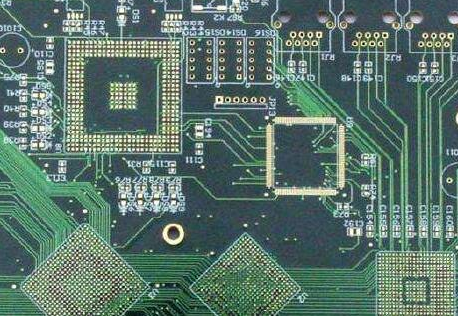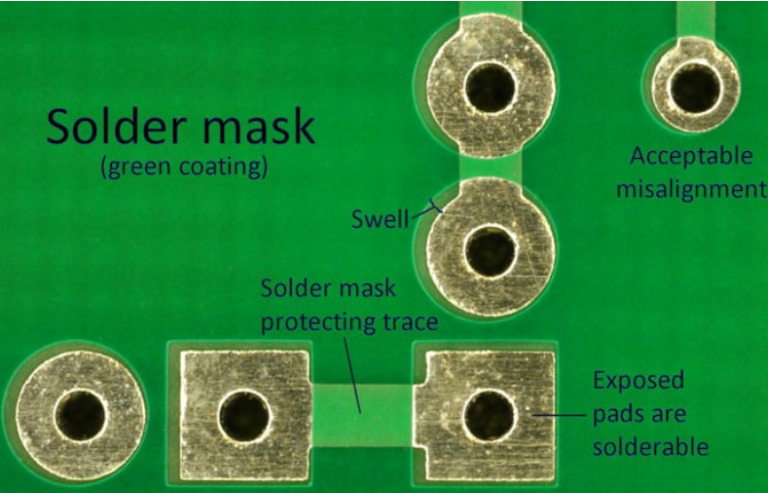Revolutionizing Manufacturing: The Future of Automated Circuit Assembly
Key Takeaways
The rise of automated circuit board assembly (or pcba) marks a significant milestone in the evolution of manufacturing processes within the electronics industry. As more businesses adopt this technology, the efficiency and speed at which pcb assembly is performed have seen remarkable improvements. The integration of advanced robotics, artificial intelligence, and real-time data analytics enables manufacturers to enhance precision while minimizing human error. These advancements not only streamline the production line but also substantially reduce costs over time. Moreover, scalability has become a cornerstone feature of modern pcba, allowing firms to quickly adapt to market demands and customize products without compromising quality. However, it’s essential to recognize that transitioning to automated processes does present challenges, such as the initial capital investment and ongoing maintenance considerations. Nonetheless, industries that embrace these innovations are well-positioned to thrive, leveraging automation to meet the ever-increasing demands for high-quality electronic components in a global marketplace. As we look ahead, staying informed about these developments will be crucial for stakeholders aiming to remain competitive in this rapidly evolving environment.
Introduction to Automated Circuit Board Assembly
Automated circuit board assembly is reshaping the landscape of manufacturing, particularly within the electronics sector. By leveraging cutting-edge technologies, pcb assembly processes have transitioned from manual operations to streamlined automated systems, resulting in profound changes in efficiency and production speed. In this transformation, pcba solutions take center stage, showcasing how automation not only enhances precision but also significantly reduces the time required for assembly.
The introduction of robotics, machine vision systems, and advanced programming techniques are some key elements driving this evolution. These innovations allow for real-time monitoring and adjustments during production, ensuring that each component is placed with remarkable accuracy. Moreover, as companies scale their operations, automated systems provide the necessary adaptability to meet fluctuating demand without sacrificing quality.
“The integration of automation in manufacturing not only boosts productivity but also enables businesses to maintain a competitive edge in an ever-evolving market.”
These advances lead to greater scalability and flexibility for manufacturers embracing automated circuit board assembly. Consequently, industry players are now better equipped to handle complex designs, tight tolerances, and shorter time-to-market schedules. As a result, the ongoing development of autonomous systems promises even more innovations tailored to meet specific industry requirements.
| Technology | Benefits |
|---|---|
| Robotics | Increased speed and efficiency |
| Machine Vision | Enhanced accuracy |
| Programmable Logic Controllers | Flexibility in operation |
In summary, the ongoing advancements in pcb assembly technology indicate a shift towards more sophisticated manufacturing processes that prioritize efficiency and quality. As we explore further into this article, we will uncover how these technologies are not just changing production lines but are also redefining what is possible in the world of electronics manufacturing.
The Evolution of Circuit Assembly Technology
Over the past few decades, the pcb assembly process has undergone remarkable transformations, significantly impacting how electronic devices are manufactured. Initially characterized by manual assembly techniques, the industry has witnessed a shift towards automated circuit board assembly methods. These advancements have been driven by the need for increased efficiency and precision in a market defined by rapid technological innovation. The introduction of sophisticated machinery and pcba technologies has not only streamlined assembly lines but also improved the scalability of production processes. Robotics, vision systems, and advanced soldering techniques have played pivotal roles in this evolution, minimizing human error and ensuring a higher degree of consistency in product quality. As businesses strive to stay competitive, embracing these innovations in circuit assembly technology becomes essential; companies can achieve not only cost savings but also the ability to adapt swiftly to shifting consumer demands and market trends. This continuous evolution emphasizes the critical importance of technology in defining the future landscape of electronics manufacturing.
Key Technologies Driving Automation in Manufacturing
In the realm of automated circuit board assembly (commonly referred to as PCBA), several key technologies are leading the charge in revolutionizing manufacturing processes. One prominent technology is robotics, which enables precise and repeatable movements essential for handling and placing complex electronic components on substrates. Coupled with vision systems, these robots can identify and rectify errors in real-time, enhancing the overall quality of the assembly process. Another pivotal advancement is surface mount technology (SMT), which has significantly increased the density of components on circuit boards, allowing for more compact designs without compromising performance. Furthermore, the integration of Internet of Things (IoT) capabilities facilitates real-time monitoring and data analytics, driving efficiency and allowing manufacturers to predict maintenance needs before breakdowns occur. Additionally, advanced software solutions that incorporate artificial intelligence enable smarter workflows and better resource allocation throughout the production cycle. These technologies not only improve precision and speed in pcb assembly, but they also elevate scalability, accommodating varying production volumes with ease. As manufacturers continue to adopt these innovative solutions, the future of automated circuit board assembly looks promising, fostering a more intelligent and responsive manufacturing environment.
Benefits of Automated Circuit Board Assembly
The implementation of automated circuit board assembly (pcba) techniques brings a myriad of significant advantages to the manufacturing sector. Firstly, this approach drastically enhances efficiency by streamlining the production process. With minimal human intervention, pcb assembly systems can operate continuously and at high speeds, allowing for the rapid production of complex circuit boards. As a result, manufacturers are able to meet increasing market demands without compromising on quality. Moreover, automated circuit board assembly promotes greater precision in soldering and placement, reducing the incidence of errors or defects in finished products. This heightened accuracy not only lowers waste but also ensures that devices function as intended, thus elevating user satisfaction. Furthermore, these systems are inherently scalable, meaning they can easily adjust to different production volumes or shifts in demand, making them ideal for businesses looking to remain competitive in a constantly evolving market landscape. Overall, the integration of automation within pcba processes not only contributes to enhanced operational performance but also positions manufacturers at the forefront of innovation within the electronics industry.
Challenges and Solutions in Automated Production
The shift towards automated circuit board assembly (PCBA) encompasses numerous challenges that manufacturers must navigate to fully realize the potential of this technology. One significant hurdle is the complexity of integrating various technologies required for efficient pcb assembly. Different machines, software, and developments in robotics must work in harmony to ensure smooth operations. The solution lies in investing in standardized protocols and comprehensive training programs for staff, enabling personnel to troubleshoot issues effectively during production.
Moreover, ensuring the quality of components during transition from manual to automated processes presents another challenge. Inconsistent parts can lead to production delays and increased waste. Implementing rigorous quality control measures—such as real-time monitoring and automated testing—can mitigate these risks. Additionally, using advanced data analytics allows manufacturers to predict potential failures before they occur, maintaining a steady flow of production.
Finally, the initial investment in automated circuit board assembly systems can deter some organizations from adopting this technology. However, many are finding that long-term operational efficiencies far outweigh these upfront costs. By exploring financing options or partnering with technology providers for phased implementation, companies can ease into automation. Addressing these challenges is critical for manufacturers aspiring to innovate within the electronics industry and remain competitive on a global scale.
Future Trends in Circuit Board Manufacturing
As we look ahead in the realm of pcb assembly, several trends are poised to reshape the future of the industry. One significant movement is towards increased miniaturization of components, which is necessitating advancements in automated circuit board assembly technologies. This miniaturization not only allows for more compact products but also enhances functional diversity on a single circuit board. Furthermore, the integration of artificial intelligence (AI) and machine learning into pcba processes is emerging as a game-changer; these technologies are expected to improve predictive maintenance and optimize production workflows, leading to significant downtimes reductions.
The emphasis on sustainability and eco-friendly practices is also becoming more pronounced. Manufacturers are increasingly exploring green technology solutions in their automated assembly processes, aiming for reduced waste and more efficient energy consumption. Advances such as 3D printing are gaining traction in the prototyping phase, allowing for rapid iteration while minimizing material use.
Moreover, with growing global supply chain connectivity, there’s an ongoing shift towards adopting more flexible and scalable manufacturing systems. This shift is enabling manufacturers to respond quickly to market demands while maintaining quality standards across pcb assembly lines. The deployment of collaborative robotics—robots working alongside humans—enhances efficiency while ensuring that human expertise is leveraged optimally.
As these trends unfold, they promise not only to improve operational efficiency but also to redefine manufacturing standards within the electronics industry, setting a new benchmark for innovation in automated circuit board assembly.
Case Studies: Successful Implementations of Automation
The impact of automated circuit board assembly (also known as pcba) can be seen through various industry case studies that highlight its effectiveness in modern manufacturing. One notable example is a leading electronics manufacturer that integrated an advanced pcb assembly system into its production line. By adopting innovative robotic technology, the company managed to reduce assembly time by over 30%, significantly enhancing overall operational efficiency. Another case study involves a small startup that leveraged modular automated systems to scale its production rapidly. With a flexible approach to pcb assembly, they were able to meet fluctuating demand without compromising on quality, demonstrating the scalability benefits of automation. Such instances not only showcase the potential for increased productivity but also underline the adaptability of pcba solutions across diverse manufacturing environments. The successful implementation of automation serves as a testament to its pivotal role in shaping the future landscape of the electronics industry, navigating challenges, and fostering technological advancements that benefit businesses of all sizes.
Conclusion: The Future Landscape of Electronics Manufacturing
As we look towards the horizon of electronics manufacturing, the prospects for automated circuit board assembly (commonly referred to as PCB assembly or PCBA) are incredibly promising. The integration of advanced technologies such as robotics, artificial intelligence, and machine learning is driving significant improvements in production efficiency and product quality. These innovations not only streamline the assembly process but also reduce human error, allowing manufacturers to achieve a higher degree of precision in their workflows. Furthermore, embracing automation facilitates scalability; as demand for electronic devices continues to rise, manufacturers can adapt their production lines effortlessly to meet this growing need. However, the transition towards a fully automated system does present its own challenges, including the need for skilled personnel to manage sophisticated machinery and systems. Nevertheless, the long-term benefits far outweigh these obstacles. The future landscape of electronics manufacturing is gearing towards automated solutions that promise not just enhanced productivity but also sustainable practices that align with modern environmental standards. This evolution in the PCBA sector highlights not only the efficiency gains but also a commitment to innovation and adaptability in a rapidly changing market environment.
Conclusion: The Future Landscape of Electronics Manufacturing
The transition towards automated circuit board assembly (pcba) signifies a pivotal moment in the electronics manufacturing landscape. As industries strive for increased efficiency and precision, the integration of advanced automation technologies is becoming essential. The future of pcb assembly not only promises enhanced production capacity but also supports rigorous quality control measures. This shift is propelled by innovations such as robotics, artificial intelligence, and data analytics, all contributing to more scalable operations. While challenges like workforce adaptation and initial investment costs exist, solutions are being developed to mitigate these issues, ensuring a seamless transition to automated processes. Ultimately, as automated circuit board assembly continues to evolve, it is shaping a manufacturing environment where sustainability and performance are paramount, thereby revolutionizing how electronic components are produced and assembled for the global market.
FAQs
What is automated circuit board assembly (PCBA)?
Automated circuit board assembly, commonly known as PCBA, refers to the process of assembling electronic components onto a printed circuit board (PCB) using automated machinery. This method greatly enhances production speed while maintaining high quality and precision.
What are the main benefits of using automated PCB assembly?
The benefits of automated circuit board assembly include increased efficiency, better accuracy in component placement, reduced labor costs, and improved scalability. These advantages lead to faster production cycles and lower risks of errors compared to manual assembly.
What technologies are driving automation in PCB assembly?
Several key technologies are revolutionizing pcb assembly, including advanced robotics, artificial intelligence-enabled manufacturing systems, and smart visual inspection systems. These innovations enable manufacturers to optimize their processes and enhance product quality.
Are there challenges associated with implementing automated PCBA?
Yes, some challenges include the high initial investment for machinery, the need for skilled personnel to operate complex systems, and the adaptation period required for integrating new technologies into existing workflows. However, many companies are finding effective solutions to overcome these hurdles.
How does automated circuit board assembly impact production scalability?
Automated PCB assembly allows manufacturers to scale their operations more efficiently by enabling rapid changes in production volume without a corresponding increase in manual labor or significant delays. As demand shifts, companies can swiftly adjust their output levels.





